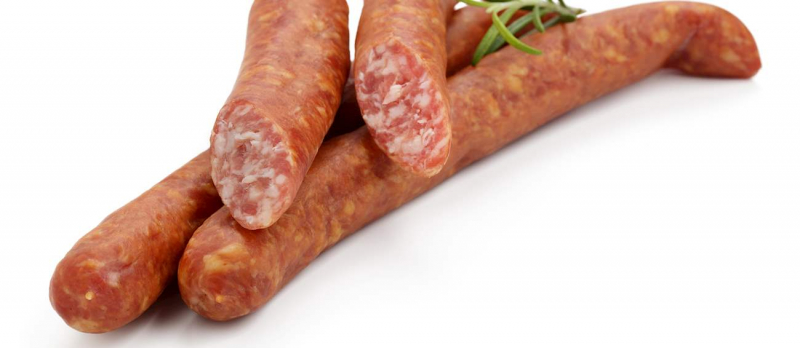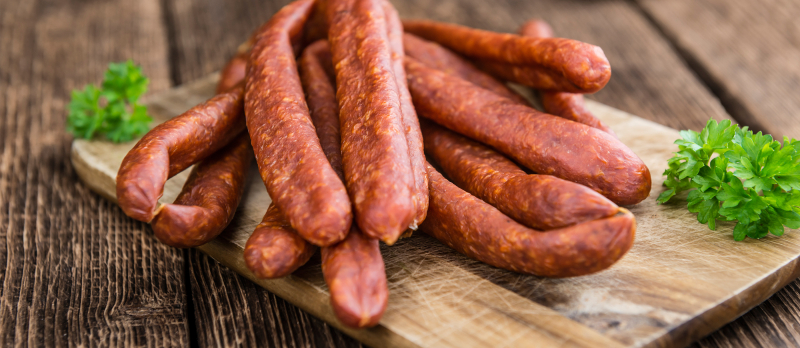Mettwurst

Mettwurst is a long and thin German sausage made with a combination of pork and beef, flavored with anything from garlic, pepper, marjoram, caraway, and mace to alcoholic beverages such as rum and cognac. Mettwurst is partially smoked but still soft and spreadable, while other northern German varieties such as Holsteiner are harder and more akin to salami due to the longer duration of smoking.
The German word "mett", meaning 'minced pork without bacon, is derived from the Old Saxon word "meti" (meaning 'food'). It is related to the English word 'meat'. Mettwurst can be prepared and eaten in a variety of ways, such as cooked or fried or spread on rye bread with onions and eaten raw. When minced raw pork is prepared without curing or smoking, it is called simply Mett. The skin is designed to be eaten and is typically not removed.
In South Australia, due to a large German emigration in the 19th century, Mettwurst is common, which is created in the northern German style and served as a cold cut. It is often consumed in school lunches and as a snack during parties. In the United States, Mettwurst is associated with the city of Cincinnati regarded as a signature dish. The town of Mineola, which was settled almost exclusively by immigrants from Schleswig-Holstein, hosts an annual heritage dinner with "Schoening-style" cold-smoked Mettwurst.
Mettwurst can be cooked and served with kale or cabbage, fried, or simply spread on bread and eaten as it is. There are also firmer variations of this sausage, which are often used in a variety of soups and stews.











